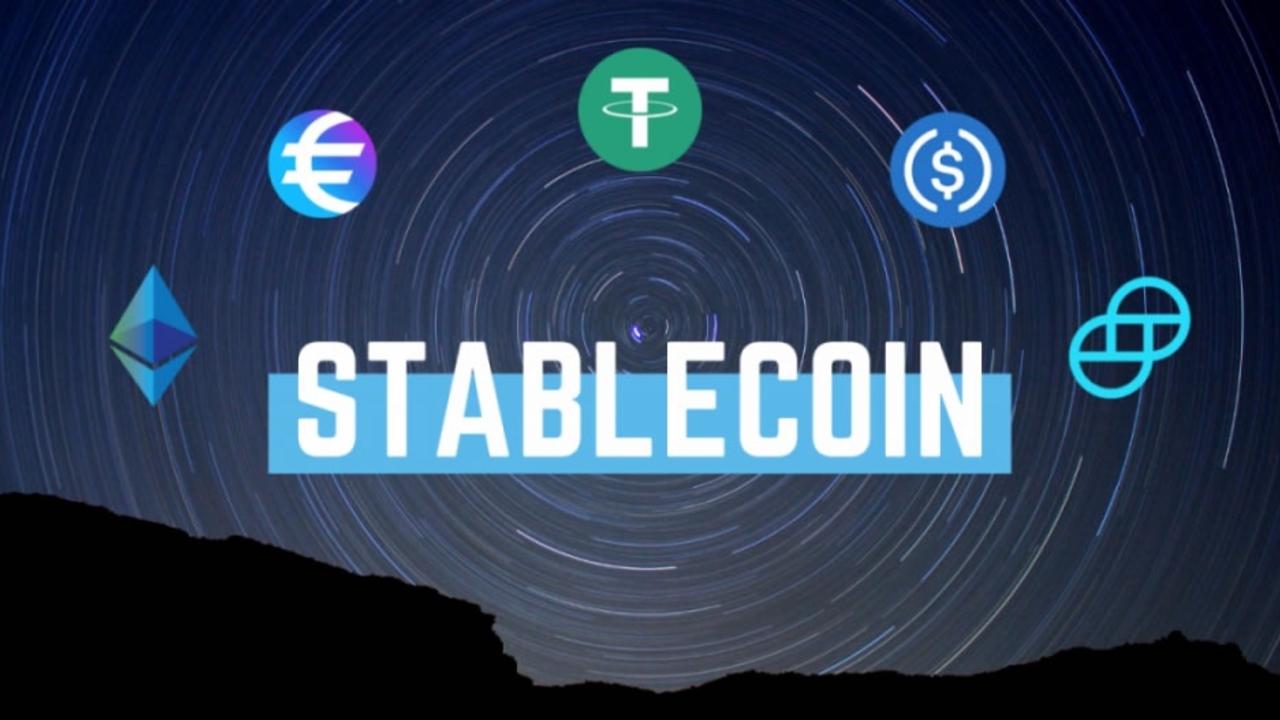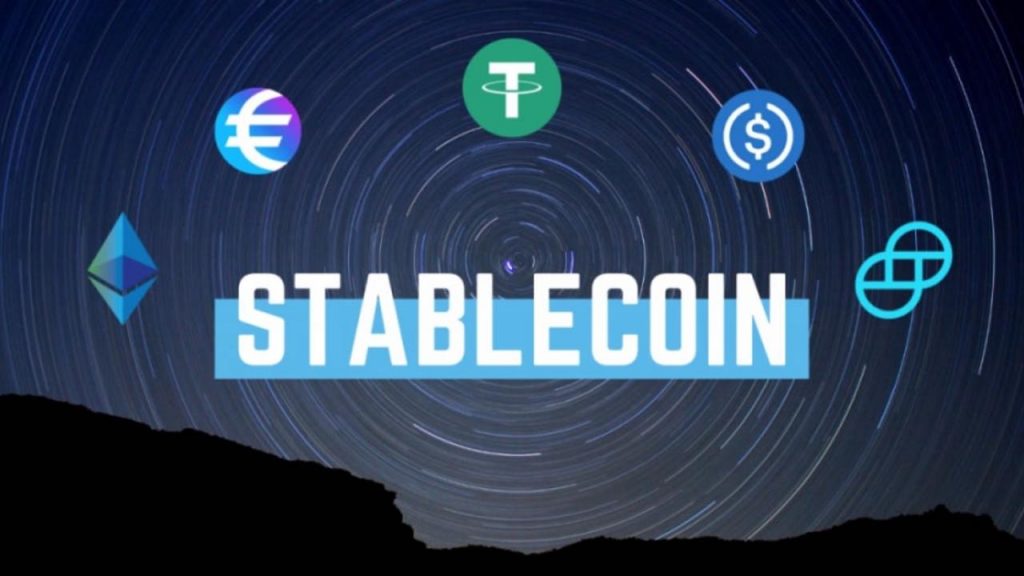
Stablecoins are price-stable cryptocurrencies that minimize overall volatility. The importance of stablecoins in crypto adoption simply can’t be underestimated. One of the most significant factors holding back the widespread adoption of cryptocurrencies has been its extreme volatility. Top stablecoins offer an alternative where people can dabble in cryptocurrencies without worrying about volatility. As you can imagine, stablecoins have found tremendous utility in modern cryptosystem.
So, before we delve into a list of stablecoins, let’s understand what are stablecoins and the importance of currency stability.
The Importance of Stable Currencies
As we have seen time and time again, currency stability is vital for the overall well-being of the economy. For example, Venezuela is a perfect instance of a country that went through financial turmoil over the last 40 years.
- In 1983, Venezuela went through continuous and uninterrupted inflation.
- Under Nicolas Maduro’s regime, the inflation rates increased in 2013, and, by 2018, the inflation rate exceeded 1,000,000%
- As per reports, Venezuelan hyperinflation rates were more severe than that face by Argentina, Bolivia, Brazil, Nicaragua, Peru in the 1980s and 1990s, and that of Zimbabwe in the late-2000s.
- In April 2019, the International Monetary Fund estimated that inflation would reach 10,000,000% by the end of 2019.
So, what were the aftereffects of this hyperinflation?
There were two huge aftereffects of this hyperinflation:
- Unemployment: As per the International Monetary Fund’s (IMF) data, in 2019, Venezuela’s unemployment levels have been at its highest levels since the end of the Bosnian War in 1995. In October 2019, the rate reached 35%, and by the end of the year, it reached 39% to 40%.
- Refugee crisis: As per UNHCR and IOM, the number of people escaping Venezuela due to hyperinflation and regime rose to 3 million in November 2018. This was around 10% of the country’s population. As per the UNHCR’s latest report, approximately 4.8 million Venezuelans qualify as refugees and migrants.
What are stablecoins and stablecoin pegs

So, this quest for stability brings us to stablecoins. Moreover, stablecoins use pegs in order to achieve stability. Pegs are a kind of exchange rate system wherein a currency’s value is fixed against either:
- The value of a single currency
- Basket of other currencies.
Countries and global economies have historically used different kinds of pegs throughout the ages:
- Classical gold standard
- Bretton Woods system
Classical gold standard
The classic gold standard originated in the UK in 1821. Between 1880 to 1914, this standard was followed by most of the countries. During this period, 1 USD was equal to 0.048 troy oz. of pure gold. In this standard, the external value of all currencies is denominated in terms of gold. Central Banks of various countries used to maintain gold reserves.

The Bretton Woods System
At the end of the Second World War, 730 delegates from all 44 allied nations gathered together at the Mount Washington Hotel in Bretton Woods, New Hampshire, for the United Nations Monetary and Financial Conference. This meeting is nowadays better known as the “Bretton Woods Conference.” During the conference, the committee decided that other countries would peg their currencies to the US dollar, while the US dollar remains pegged to gold.
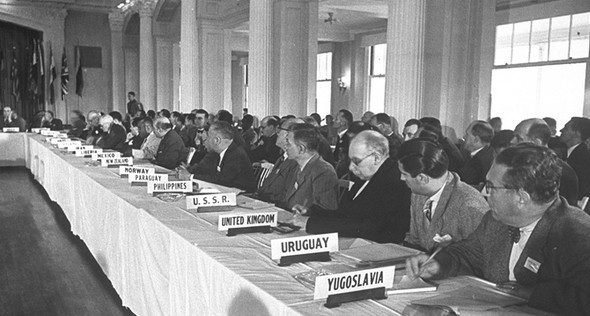
The Bretton Woods Conference
However, this system eventually fell apart. Over the course of 25 years, the dollar got devalued, and other countries eventually exchanged their USD foreign reserves for gold, which drained Fort Knox. Finally, President Richard Nixon removed the USD-gold peg, and the US dollar became a free-floating currency.
How do stablecoins work? Maintaining pegs
Successful pegs must answer the following questions:
- Can it withstand a good amount of volatility?
- Is it expensive?
- Is it easy to analyze all the band of behavior from which it can recover?
- Can the traders transparently observe true market conditions?
How do stablecoins work around the “unholy trinity”
The unholy trinity is also known as the “impossibility trilemma.” The unholy trinity states that it is impossible to have all three properties at the same time:
- A peg or fixed exchange rate.
- Free capital movement.
- Sovereign monetary policy.

Let’s first look at free capital flow and sovereign monetary policy.
- Free capital flow: Citizens should have the freedom to diversify their portfolio by investing abroad.
- Sovereign monetary policy: The central bank has the freedom to monitor the supply of currency when needed.
As per this law, no country or monetary ecosystem can execute these three properties at the same time. Let’s look at an example that best showcases this issue – the 1997 Asian financial crisis. In the 90s, East Asian countries:
- Had their currency pegged to the USD
- Had their own independent monetary policy
- Had a free capital flow
So, what did this mean for their populations?
Citizens could not only invest anywhere they wanted, but foreign investors were also encouraged to invest a lot of money in the countries.
When trade conditions were favorable, the investments reaped enormous amounts of money, which simply inflated the bubble. However, when the balance reversed, the bubble popped, and it resulted in a financial disaster so bad, that the damage done economically to countries like Thailand was equivalent to a full-scale war.
The Conditions for the Unholy Trinity
As per the diagram above, we have three options A, B, and C:
- A: Free Capital and Fixed Exchange.
- B: Free Capital and Sovereign Policy.
- C: Fixed Exchange and Sovereign Policy.
Let’s observe these options one at a time.
Option A
The Eurozone best exemplifies this option. The Euro currency and capital govern all the countries in this zone. Plus, financial capital can flow in and out of these member nations. However, these member countries can’t enact their own independent monetary policy.
Option B
The investors have the freedom to invest wherever they want and the central bank of the country can enact their own monetary policies. However, the currency has no fixed peg. The US follows this system.
Option C
China is the best example of this system. They make their own monetary policy and they maintain an exchange rate. However, there is no free flow of capital.
How do stablecoins work? A, B, or C?
Since stablecoins require pegs, we can only have options A or C.
In option C, you need a centralized body to take care of your monetary policy, which isn’t possible in a decentralized system. This is why only option A can work with stable coins.
The need for top stablecoins
So, why is there a need for stablecoins to begin with? In essence, this boils down to an issue with volatility. Traditional cryptocurrencies still suffer from relatively significant volatility. Stablecoins aim to alleviate this.
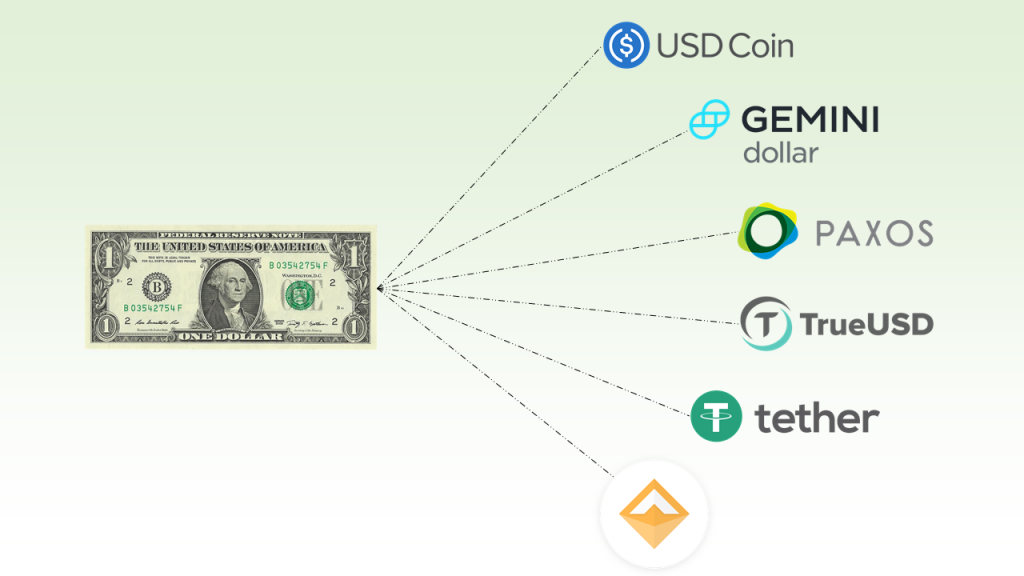
- Traders use volatility to make profits from their trades. However, taking advantage of crypto volatility requires a lot of luck or skill. Several traders have lost significant portions due to negative market swings. Top stablecoins can allow traders to keep their investments safe.
- Crypto-to-crypto exchanges can offer trading pairs in stablecoins to offset price volatility,
- Volatility is often the most significant detriment to mainstream adoption. However, top stablecoins can mitigate this and help promote mainstream adoption.
- Cryptocurrencies aren’t ideal for time-based contracts due to their extremely volatile nature.
What are stablecoins? Three classes of stablecoins
The three main classes of stablecoins are as follows:
- Fiat collateralized.
- Crypto collateralized.
- Non-collateralized (algorithmic)
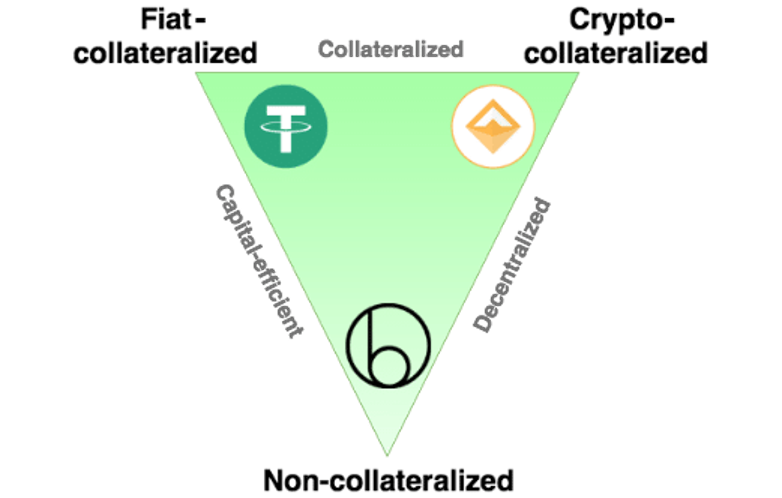
Fiat Collateralized
This is probably the most straightforward implementation of stablecoins. These coins are backed by real-world assets like fiat currency or commodities. Tether (USDT) is a stablecoin that is pegged 1:1 to the US dollar. Commodities that can be pegged to stablecoins are gold, silver, and oil. Digix Gold (DGD) is an example of a commodity-backed stablecoin.
Crypto Collateralized
A basket of cryptocurrencies backs these stablecoins. But, cryptocurrencies are unstable, unlike fiat currencies, right? How do we maintain a stable peg? For this, we follow a principle called “over-collateralization.” What does this mean? $100 worth of stablecoins have to be collateralized by $200 worth of cryptocurrencies. Dai is an example of the crypto-collateralized stablecoin.
Non-Collateralized
The final type of stablecoin is non-collateralized. These coins are not backed by any assets but by a complex combination of algorithms and smart contracts, aka, Seigniorage Shares, which was first introduced by Robert Sams in 2014.
List of stablecoins
Here are some of the top stablecoins in the world:
- Gemini Dollar (GUSD)
- Tether (USDT)
- USD Coin (USDC)
- TrueUSD (TUSD)
- Dai (DAI)
- Paxos Standard (PAX)
- Reserve (RSV)
- USD Coin (USDC)
- Wrapped Bitcoin (WBTC)
- Terra (TERRA)
The Three Top Stablecoins
Now, let’s look into the three top stablecoins in the market:
- Tether
- Dai
- USD Coin
Top Stablecoins #1: Tether
Ticker: USDT

Tether is issued 1:1 against fiat currencies like the dollar, the euro or the Japanese yen. Exchanges like Binance and Bitfinex provide trading pairs with USDT, which automatically increases liquidity and keeps you safe from price fluctuations.
Looking into Tether
Tether was specifically designed whose primary use is to build a bridge between fiat and cryptocurrencies. As such, users receive stability, transparency, and minimal transaction charges during their transactions.
As per The Wall Street Journal, USDT facilitates 80% of all Bitcoin trading done by Tether and is a source of significant liquidity. Launched at RealCoin in July 2014, it was rebranded as Tether in November by Tether Ltd. The company ensures that reserve amounts of fiat currency are continually maintained to fuel this system.
Tether’s main issues
- Centralization concerns: Tether and the Bitfinex exchange have a very dubious working relationship. There have been several questions raised about USDT’s centralized supply.
- Peg credibility: There is a considerable lack of transparency when it comes to Tether’s peg. The circulating supply of USDT is presently 9,998,221,723, which means that it’s backed by nearly $10 billion. Tether has never shown proof that they actually own that amount of cash in reserves.
- BTC manipulation: Does tether generation affect Bitcoin’s valuation? Apparently, yes. As per Tethereport, 50% of BTC’s rise took place within two hours after the release of new USDT tokens. Plus, 80% of BTC’s current value may be derived from Tether’s price manipulation.
Top Stablecoins #2: Dai
Ticker: DAI
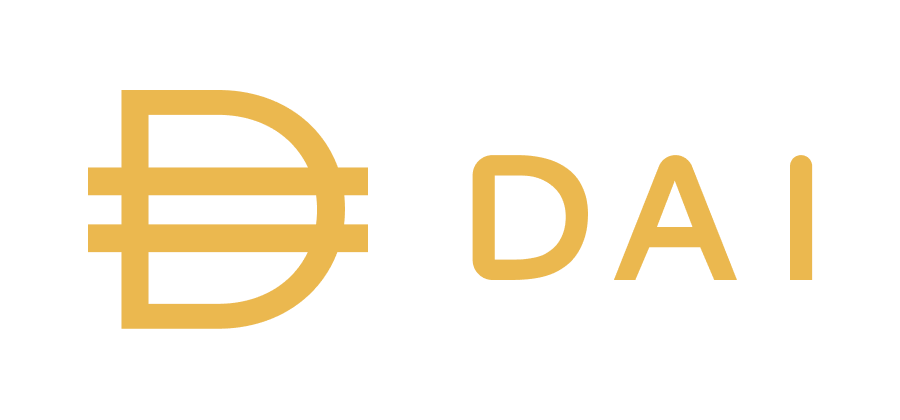
MakerDAO is one of the most well-known projects in the crypto space. DAO stands for decentralized autonomous organization, aka, a smart contract-run organization that executes and evolves without central supervision. Maker’s main aim is to offer a network that isn’t subject to the cryptoverse’s price volatility and provides a “safe haven” for users. Maker is the only DeFi app in the space with over a billion dollars locked up in its contracts.
Maker employs a dual-token ecosystem with DAI and MKR.
What is DAI?
Behind Tether, DAI is easily the most popular stable coin in the world. 1 DAI will always be equal to 1 USD, so you can say that it is pegged 1:1 to the dollar. However, instead of being pegged by cash as Tether, it is backed by a basket of tokens. The Maker smart contract adjusts the token-DAI ratio in the contract to stabilize the price of DAI tokens.
Anyway, that’s a very brief overview. Let’s now look at how it actually works.
How DAI works
DAI eliminates price volatility via autonomous smart contract usage. Its core smart contract is called the Collateralized Debt Position or CDP.
So, how does the CDP work? Let’s take a look.
- The Maker platform first generates the CDP to issue DAI tokens.
- There is an upper limit to how much DAI can be created or borrowed, which depends entirely on the collateral amount.
- DAI:ETH ratio is overcollateralized. So, for example, 1 DAI would require 1.5 ETH work of tokens to be locked up in the contract.
To better understand this relationship between DAI and CDP, consider the following example. Let’s assume that ETH is trading for $300. In that case:
- You have deposited 1 ETH in the CDP and withdrawn 200 DAI (300/1.5), assuming that 1 DAI = $1.
- If the price of ETH falls below $300, the CDP gets shut down. In this can, you need to put in more ETH into your CDP and ensure liquidation.
Creating these CDPs requires you to pay a certain amount of fees that are payable only in MKR. Upon closing a CDP, you return your borrowed DAI and payback stability fees in MKR. As soon as you pay the fees, the MKR used gets immediately burnt to keep its circulating supply in check.
Top Stablecoins #3: USDC
Ticker: USDC

USDC is a relatively new stablecoin that’s pegged by USD and managed by a consortium called Center. It was founded by Circle which boasts the likes of Coinbase and Bitmain as its main investors.
USDC has leveraged Circle’s considerable clout in the market to become the fastest-growing stablecoin in the market and has an overall valuation of close to a billion dollars. The company behind USDC is the Goldman Sachs-backed Circle, a global financial technology firm. It enables companies of all sizes to undergo financial transformation by empowering them to realize the power of stablecoins and public blockchains.
So, why did we choose USDC as one of the top three coins? Let’s take a look.
Why USDC?
- It’s the fastest-growing stablecoin in the market and has already enjoyed adoption by multiple fintech firms. We can confidently say that based on the fact that USDC has crossed $50 billion in transaction volume. It is prominently featured and used by DeFi heavyweights such as Compound, Maker, REN, etc.
- As already mentioned, USDC’s parent company, Circle, boasts some highly impressive investors. The Coinbase and Bitmain have Goldman Sachs, Breyer Capital, IDG Capital, General Catalyst (AirBnB, Snapchat), Accel Partners, Digital Currency Group, Blockchain Capital, Pantera, etc.
Conclusion
So, there you have it.
We didn’t just give you a random list of stablecoins, but we listed out, what we feel, at the three top stablecoins in the world.
Now, are these the three best stablecoins? Absolutely not. Tether, Dai, and USDC have all faced varying degrees of criticism. However, you can’t deny their sheer utility.
Did you like this article on top stablecoins? In this article, we learnt:
- What are stablecoins?
- How do stablecoins work?
- List of stablecoins.
Want to learn more?
If yes, then come on over and enroll in some of the blockchain courses available at Ivan on Tech Academy. Join us and learn from some of the best experts in the industry. It’s not too late to help shape the future of crypto!
